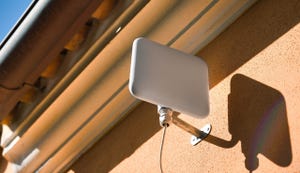Du to boost domestic IoT offer after Nokia RedCap trial
Du and Nokia have announced the completion of a successful trial of 5G-Advanced RedCap technology that should enable new Internet of Things (IoT) use cases.
December 7, 2023

The firms said the trial used T300 series RedCap test equipment from MediaTek and Du's 5G standalone network, built with Nokia radio kit. They used existing mid-band spectrum, but there are also plans afoot to test the technology over low-band spectrum.
Or possibly that has already happened. The companies' announcement states that the mid-band trial "will follow extending RedCap over low-band frequencies," which is not particularly clear. Nonetheless, we get the point: low-band spectrum is also important here for, as the firms' put it, "ensuring extreme coverage and connectivity."
They reference the 600 MHz band specifically, which is currently under discussion at the ongoing World Radio Conference in Dubai. The band is "vital" for future connectivity, they point out.
While the successful testing of RedCap is important from a technological point of view, it's what it can bring to the operator community in terms of monetisation that's key. But Du has already thought of that.
The United Arab Emirates-based operator highlights the technology's potential for innovative 5G-based use cases in IoT, wearable devices and Industry 4.0 "to address 5G monetisation challenges." In particular it is looking at adding lower-cost 5G home wireless, wearables, video surveillance and wireless industrial censors to its portfolio. The relevant RedCap devices will be commercially available from next year.
Suggesting that the use of RedCap will solve the 5G monetisation issue is a bit of a stretch, but it will certainly help.
In a nutshell, RedCap devices are smaller, cheaper and consumer less power than your average 5G device. It's a pared back version of 5G that makes a lot of sense for the IoT sector, where reliable connectivity is a must, but ultra-low latency is not necessarily needed, and compact form factor, better battery life, and lower bandwidth requirements are a big advantage.
That being the case, Du and Nokia are not the only companies jumping on the RedCap bandwagon.
A couple of months ago BT announced it was working with Nokia and MediaTek to unlock new IoT use cases and – presumably – help its EE mobile arm with that thorny 5G monetisation issue. Huawei has rolled out RedCap with the big three Chinese operators and has listed a host of international telcos as having piloted the technology, including e&, Saudi Telecom Company (STC), Zain, and Thailand's AIS.
Meanwhile, Ericsson, Vodafone and Qualcomm claimed a European first RedCap rollout, sharing details of a demo that took place in Spain in September.
RedCap is gathering pace and those involved have high hopes for it.
"This new collaboration between du and Nokia represents not only a significant step forward in the monetization of 5G technology but also solidifies the UAE's position as a pioneer in the evolution of 5G use cases for society and enterprises," said Mikko Lavanti, Senior Vice President at Nokia MEA.The telcos will certainly be hoping he's correct on the monetisation point.
About the Author
You May Also Like










.png?width=300&auto=webp&quality=80&disable=upscale)


_1.jpg?width=300&auto=webp&quality=80&disable=upscale)